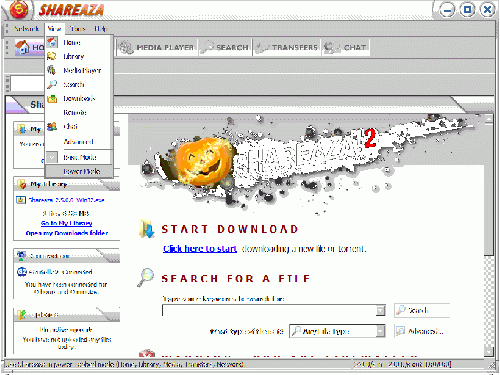Magnet link
For information regarding the technical details of magnet links, see Magnet URI scheme.
|
|
[[::Magnet link|English]] • [[::Magnet link/de|Deutsch]] • [[::Magnet link/es|Español]] • [[::Magnet link/fr|Français]] • [[::Magnet link/he|עברית]] • [[::Magnet link/it|Italiano]] • [[::Magnet link/nl|Nederlands]] • [[::Magnet link/pl|Polski]] • [[::Magnet link/pt|Português]] • [[::Magnet link/ru|Русский]] • [[::Magnet link/zh-hant|中文(繁體)]] | e |
What are Magnet Links
Magnets are a type of URI (Universal Resource Identifier). They are used to assemble useful information about a thing (most often a file or similar resource) in a clear, extensive format. Most often, they are used to provide information about a file in a way that allows P2P programs to download the file from a P2P network.
This means Magnet links are a powerful tool that allows to provide a link to a specific file on a P2P network which can then be downloaded with a compatible program. They are a fantastic way of utilizing the power of P2P networks to share your files with the world. For instance, you can use Magnet links to share a specific file with your friends over instant messengers (such as ICQ, MSN/WLM, Jabber or IRC), eMail or similar means without the need to send the file directly to them. On an other scenario, a visitor to your website can click on a Magnet link and download a file from hundreds of other people on the network. This means they aren't downloading it from your web server and racking up the huge bandwidth bill you would normally have to pay for hosting.
Shareaza, Phex and other gnutella programs can understand Magnet links. Azureus, as well as other BitTorrent clients are also able to use Magnet links. However, their usage of Magnet links differs from the usage of P2P network programs (remember, BitTorrent is not a P2P network!), as they use Magnets to link to torrents in the BitTorrent DHT, using the BTIH (BitTorrent Info Hash) of the torrent download.
For each file in your library, there is a right-click option to copy its URI. This can be used to copy into the clipboard either a Magnet link for the file with the file's BitPrint (the SHA1 and TigerTree hash) and File name, or an eD2k link. If you highlight multiple files in your library (by holding down <Shift> or <Ctrl> while selecting the file), there is an option to export more complex URIs to the clipboard, or to a file.
See the Library Manager Wiki page and the animated image below for more information on how to exactly copy URIs from the context menu.
While a file is in the process of being downloaded, it is also possible to copy its URI, but it is not possible to export URIs for multiple files from the download windows, like one can from Library Manager Window.
See the animated image below to see how to change the display mode to Power Mode and create a Magnet link from the context menu of a file in the Shareaza Library Manager.
Using the export URI feature
Please refer to the Library Manager page for the process of exporting URI to a file or to the clipboard.
How to include Magnet Links on a WebPage
From the Export URI feature, export the magnets in 'html format' to a file. Add any tags to magnet that you wish to include. The Library Manager wiki page has some preformatted examples of tags you may wish to include.
for example: enter in the export URI dialog box:
<a href="magnet:?xt=urn:sha1:[SHA1]&xt=urn:tree:tiger:[TIGER]&xl=[ByteSize]&xt=urn:ed2k:[ED2k]&dn=[NameURI]"> [Name]</a><br>
Save the output to a file, which will look like (the hashes having been altered for ease of viewing: {...} has been added for missing sections):
<a href="magnet:?xt=urn:sha1:HA{...}I3&xt=urn:tree:tiger:H7{...}6I&xl=397&xt=urn:ed2k:27{...}3f&dn=test.txt">
test.txt</a><br>
NOTE: be cautious of the use of '&' when including these files in html pages. The use of '&' unescaped (as a delimiter) is correct for URI encoding in this instance, but web pages are also HTML encoded, and so the ampersand, &, should technically be replaced with & . Most browsers or web page servers are not confused if you fail to do this step however.
You may want to include a little icon in your magnet link, before the 'clickable text', so that it looks pretty. There are some examples of icons you may wish to use for the links your webpage at the MagnetURI web page.
example:
<a href="magnet:?xt=urn:sha1:{...}&dn=somefile"><img src="RelativeOrAbsolutePathToMyMagnetIcon.gif" align=middle border="0" ALT="error">somefile.file</a>
Magnet links can be included in posts on the shareaza forums using the [url]and[/url] tags. They use the format
[url=*magnet_link*]*display_text*[/url]
where *magnet_link* is the magnet link in question and *display_text* is the text displayed as the link. If this does not work for some reason, use the url linking as shown in the next paragraph.
How can I post a magnet link on a website that does not recognize magnet links?
If a site does not recognize magnet links or blocks them then you can still link to the file using the magnet linker tool at sure-raza.com. This service is very simple to use. simply add "http://sure-raza.com/" to the beginning of the magnet link
http://sure-raza.com/magnet:?xt=urn:bitprint:blahblahblah
Then post it like you would post a link to a regular website.
See also
External Links
Magnet links
- http://magnet-uri.sourceforge.net/ - The SourceForge.net Project page
- Yahoo! Magnet link discussion group page.
